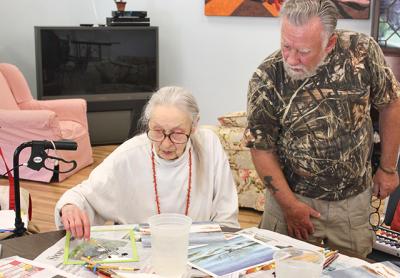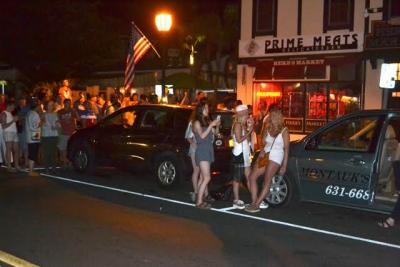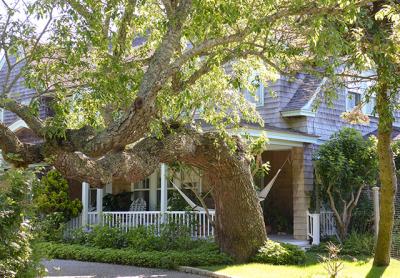Never Too Late to Start Painting
Never Too Late to Start Painting

Less than a year ago, Jinna Rolf, who is 93, began painting. Although she and the other members of her art class have had a variety of hobbies during their lives, all of them discovered the joys of painting in their later years.
Every Thursday, four residents of the Windmill Village affordable housing complex in East Hampton attend a painting class taught by a fellow resident and artist. Seated at a round table, the group chats between brushstrokes while Robert Hettiger guides and critiques them. He challenges them to work in ways they never thought possible, always giving them tips — like painting trees upside down because it is easier that way.
Since September, Mr. Hettiger, a wildlife artist, has been volunteering his time to teach the hour-and-a-half classes. “I’ve been doing art for over 45 years,” he said. “One day it just came into my head, and I thought, ‘Maybe I can teach people.’ ”
With a little help from the social service coordinator at Windmill, Mr. Hettiger had 10 people sign up. Although teaching was new for him, he designed a lesson plan to assure that each week built on what was learned the one before it.
The first session began with adult coloring books; now they are working with acrylic paint on canvases. Although the number dwindled to four, the current group has learned much more than how to properly hold a paintbrush.
“I see everything differently now,” Ms. Rolf said. “I walk with my walker and I come by a lot of trees and deadlleaves on the ground, but I see them so differently than I did before.”
Not only has the class helped the participants look at their surroundings more thoughtfully, art is also influencing their lives in other ways.
For Carol Sherman, a poet and former fashion designer who said she struggled with the minute detail of sketches, Mr. Hettiger’s class has made her a more confident artist. While she had dabbled in watercolors because they were more forgiving, “I’ve been doing things I never did before,” she said. “Sometimes if I don’t have a book that I really want to read or I don’t want to watch TV, I pull out the art. You get lost in it.”
Sean Doyle, another member, also finds pleasure in the class. “This is very challenging for me, but for some reason carving wood is very easy . . . don’t ask me why,” he said. “Sometimes I suffer, but I look forward to it. I’m here every Thursday.”
“You know,” Ms. Sherman said, “when you get to a certain age, you’re not running out all the time, going to events and local readings and so on, so it gives you a whole other dimension.”
Similarly, Jennifer Farbar, a younger member of the class, is grateful for how it has affected her. Because of certain challenges, she looks for ways in which to appreciate her brain’s strengths. She has found coloring and painting to be relaxing, and while it can be difficult, she said it is good to be challenged. “I’m 52 and I’m mentally disabled, but look at what I can do,” she said. “That’s a really good feeling.”
Although the participants had different reasons for signing up, all have learned new things about themselves from painting. Regardless of age, they have become fond of a new activity that they each continue to do on their own outside of the weekly meetings.
As September slowly approaches, so does the end of Mr. Hettiger’s yearlong class. While he is not planning to continue teaching it, he is encouraging his students to keep painting. “I tell them they can come in as a group and keep this going,” he said.








